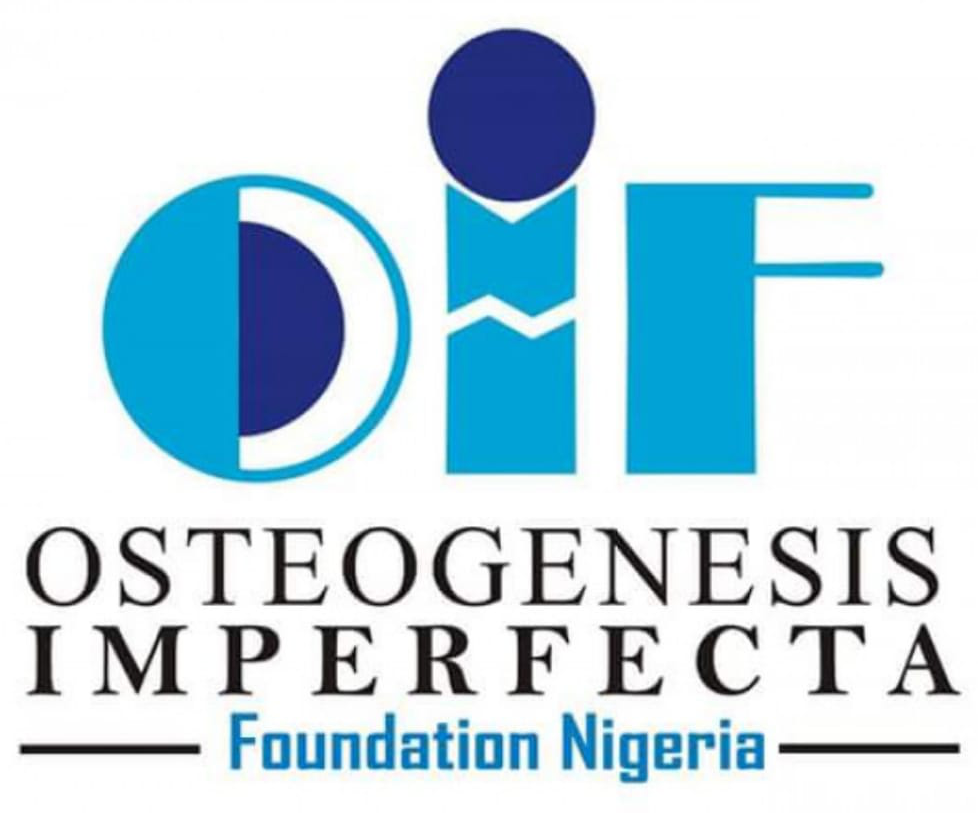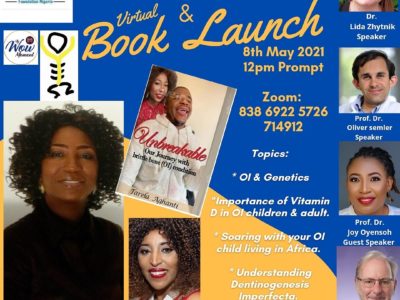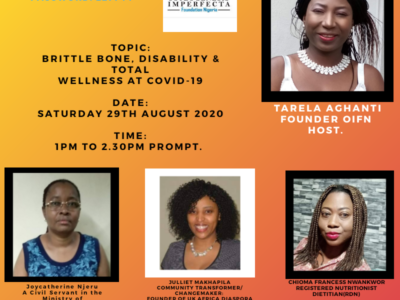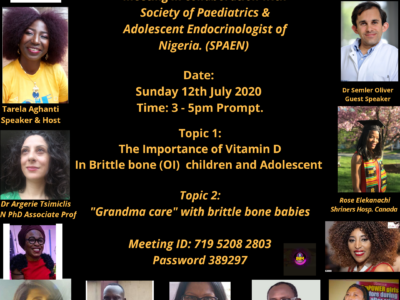Project Description
Introduction
I want to begin by thanking the organizers of today’s webinar for inviting me to give a presentation on the care of babies with Osteogenesis imperfecta (OI) popularly known as “brittle bone disease”. I will structure my presentation first by defining OI, and then sharing with you my experience both as a Grandmother as well as a child right practitioner.
Before going into the presentation, let me tell you a little bit about our NGO, the Association of Childhood Education Practitioners (ACEP), based in Lagos, Nigeria. Our overriding objective is to eradicate all inhibiting factors militating against the growth and development of the Nigerian child. To achieve this, we engage governments, ministries, and agencies responsible for education policy, philanthropic organizations, and development partners to sensitize our society and policy makers on the state of childhood education and health. This way, we contribute to childhood development and the eradication of childhood poverty. We would very much welcome the opportunity to partner with NGOs in other countries that are pursuing similar ideas.
Presentation: Definition of Brittle Bone Disease
According to the Health Encyclopedia, Osteogenesis imperfecta (OI) or brittle bone disease is a rare inherited (genetic) bone disorder that is present at birth. A child born with OI may have soft bones that break (fracture) easily, bones that are not formed normally, and other problems. OI is a lifelong genetic disease.
Given the severity of the disease, a child born with OI presents the caregivers, be they parents, grandparents, or extended family members with a lot of challenges. This is because such children often would exhibit symptoms such as multiple broken bones, loose joints, weak teeth, bowed legs and arms, abnormal outward curve of the back, scoliosis, or an abnormal lateral curve of the spine, early hearing loss, respiratory problems and heart defects. All these call for a high level of care and attention as the baby grows.
Traditional Practices
In Nigeria, grandparents are traditionally involved in the care of newborns. In many areas where access to health care is limited, grandparents are relied upon to play the role of mid-wife. In the first few weeks of life, grandparents are strongly relied upon to assist with bathing of the child and the healing of the umbilical cord, sometimes with native ointment rubbed in. Bathing of the body often involves twisting of the hands and legs forward and backwards, with the intention of achieving flexibility. Feeding is often done forcefully. The nostrils are blocked to fasten the child swallowing of the food, with the baby laid flat on Grandma’s laps. As the baby grows, a crawling child could be strapped to a fixed object like a chair to limit mobility. Circumcision is a rite of passage for the male in most African cultures, but also for the female in a few ethnic groups.
Effect of Traditional Practices on Children with Brittle Bone Condition
Unfortunately, brittle bone disease is sometimes diagnosed well after birth. This means that a newborn that has been exposed to the traditional rites of grandmothers could be in a situation where the disease is complicated by the type of care received. For example, a child exposed to grandmas using unsterilized knives to cut the umbilical cord, bathing a new born with unsterilized water, positioning of the child in an horizontal position whereby to force-feed, and strapping the child to a fixed object to prevent wandering around when crawling. Some of these practices are still common in the rural communities. As a result, the problem of a child that comes to the world with brittle bone genetic disorder would be even more complicated under this circumstance.
ACEP Intervention
As a child rights advocacy group, ACEP has conducted educational programs in rural areas which is focused on educating the care givers on the importance of the first 100 days of child life. The program targets older females and grandparents who are usually the main care givers in the early days of a child’s life when the mother is recovering. ACEP program educate Grandparents and care givers to maintain high level of hygiene, and to avoid force-feeding babies or turning their heads upside down as the culture demands. ACEP has emphasized the need for grandparents to be mindful of (1) standard measures of food, not just until the baby’s stomach is full, (2) avoidance of shaking babies or raising them up persistently for some time, (3) the possibility that water and food could sneak into the brain. All of these have ensured that if the child already has brittle bone disease, the situation will not be complicated or worsened by improper childcare. ACEP therefore provides training so that while grandmas can continue to support the care of children, they do so with knowledge of the consequences of their actions on the health and wellbeing of the child.
The Role of Grandmas
Given that there is no cure for brittle bone disease, grandmas will play a crucial role in the delivery of therapies that help reduce a child’s risk of broken bones and increase the quality of life. Some of the treatments for brittle bone include physical and occupational therapy to increase child’s mobility and muscle strength, medications to strengthen child’s bones and reduce any pain. In some cases, some children will undergo surgery to correct the spinal cord. In addition, as a child grows up there may be needed to provide mental health counseling to help treat issues with body image. In the management of these therapies, Grandmas can prove useful in assisting the parents and contributing time and money, especially if the parents are working parents. Grandmas can assist with hospital visits and supervising other care givers. In the case of children with severe conditions that require wheelchair or crutches, the availability of a strong support network throughout the child’s life is very important.
ACEP is ready, willing, and able to partner with organizations that want to support interventions in this area.
GRANDMA’S CARE IN BABIES WITH BRITTLE BONE CONDITION (OI)
Presented by
Mrs I.O. Oshodi, President of ACEP
Association of Childhood Education Practitioners
Lagos State Coordinator
National Council of Child Rights
Advocates Of NIGERIA (NACCRAN)




